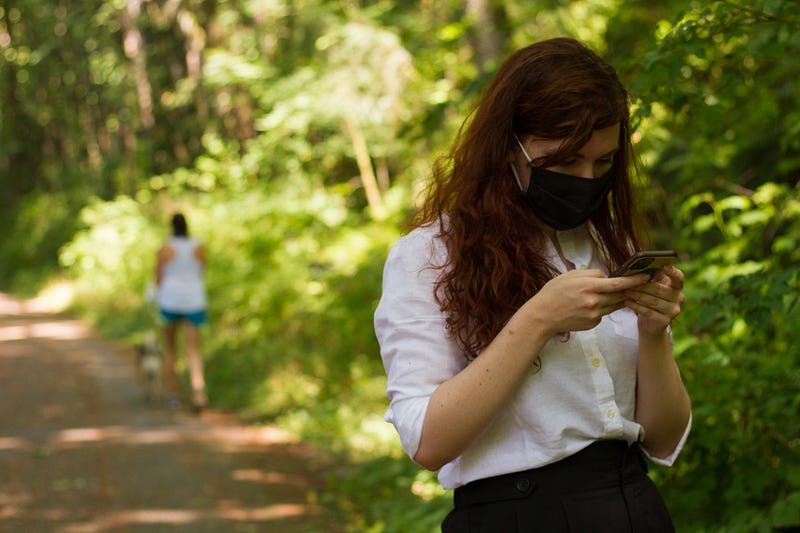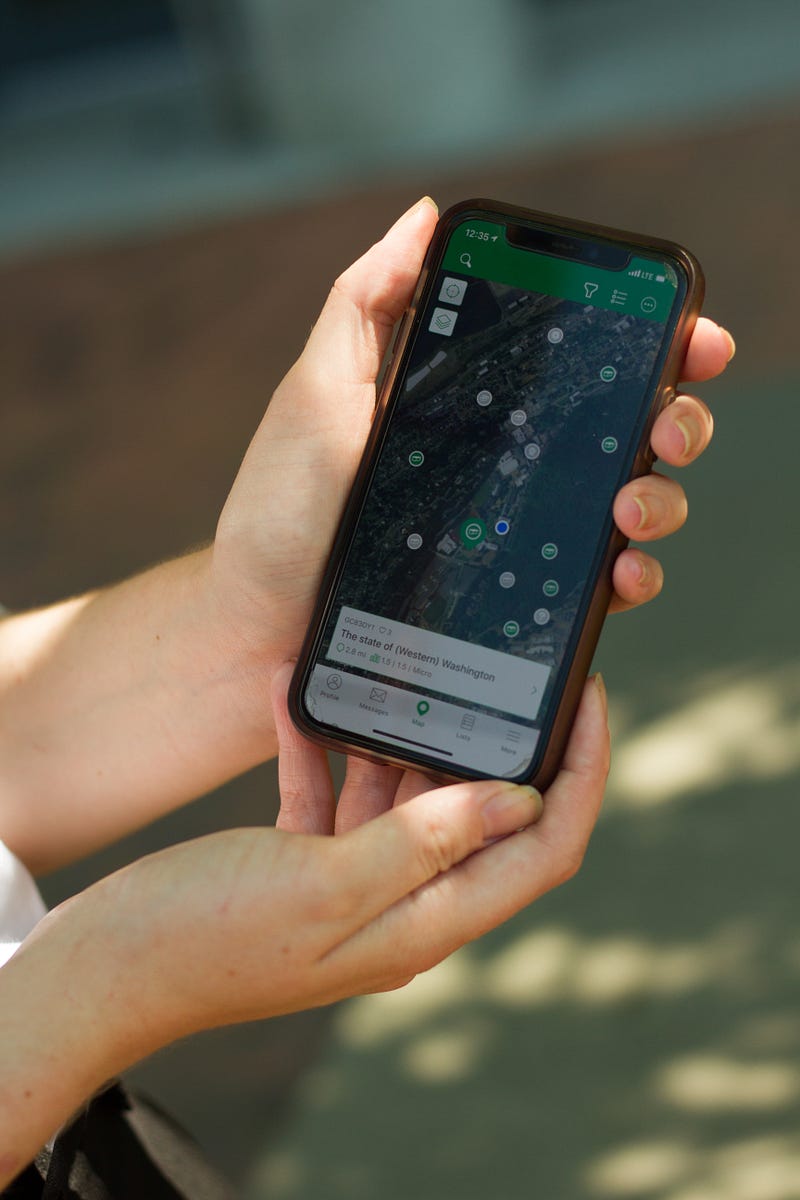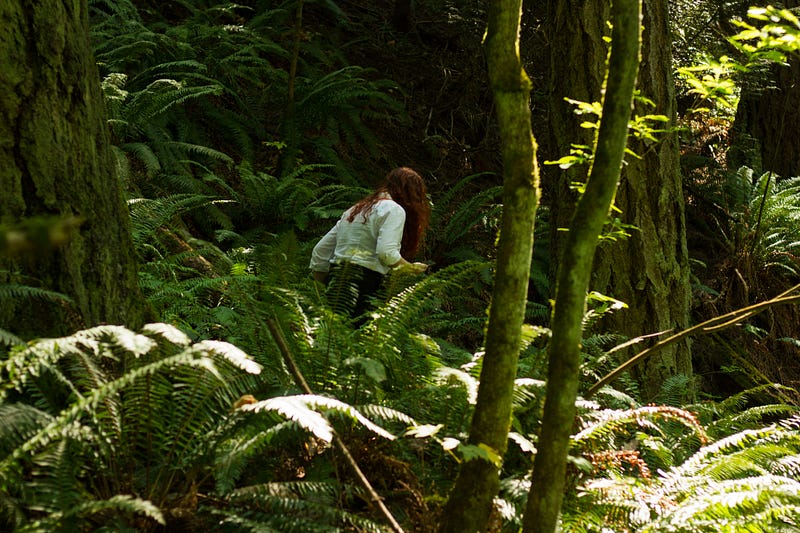Dear Diary: My Adventure in Geocaching
An interurban treasure hunt brings outdoor entertainment in the middle of a pandemic
Story by Mallory Biggar

Day 1
Friday, July 3: The temperature outside is still not breaking the mid-60s, and a little bit of wind makes anything more than a sprinkle unbearable. Or at least more uncomfortable than the mist any average Washingtonian is used to. I’m freezing and generally do not deal well with mild discomfort. But if I’m waiting for the rain to stop, it may be a while.
Today, I’m going Geocaching.
Geocaching is a real-world scavenger hunt on a global scale, as my friend Alex, who first introduced me to Geocaching put it. About a year ago when he was visiting Bellingham, he took me on my first hunt, and I’ve been itching to go out ever since.
What started in 2000 as one person posting coordinates to a large black bucket filled with prizes to be found has developed into a worldwide phenomenon with only one request to the finder, “take some stuff, leave some stuff.” From what I gathered from the website, the name “Geocaching” stems from the prefix “geo,” for earth, and “cache,” a French term meaning a temporary hiding place.

Although Geocaching technically started in Portland, the Geocaching headquarters are less than 90 miles away in Seattle, which as a Pacific Northwest native I think is pretty cool. This is definitely something I’ll have to check out post-pandemic. The idea is that if I have the coordinates, I’ll find the prize. Or in this case, many prizes; Bellingham has dozens of caches hidden all over the city.
How to play:
To make things easier, I downloaded the official Geocaching app. The app automatically links your location and shows which caches are closest to you, caches around town as well as premium caches which require a subscription. The navigation system will lead you to where the cache you choose is generally located, but it’s up to the player to unveil the cache. Every cache has a name with a story behind it.
First cache: Earth, Wind and Fire
Given the weather, I’m sticking close to home today. Alongside my travel companion, Jonathan and our trusty sidekick, a 90-pound chocolate lab named Peighton, we set off for our first cache in Whatcom Falls Park. It’s raining, it’s cold and worst of all, it’s muddy and I’m clumsy. It’s just a matter of time before I trip over a tree branch and fall face-first into the soft dirt. But of course, most caches in the area are in the park.
This cache is less than half a mile away. According to the description, the author has a series of band-related caches, all relating to where they are hidden. It is close to the earth (this is both a description and a hint), the trail itself has a cool, gentle wind and fire, a reference to the 1999 natural gas fire that devastated the area.
“While the fire was tragic, it’s amazing how nature bounces back,” the author wrote.
As far as I can tell, there are no scars left behind from the tragedy, but instead an all-encompassing greenness.
The walk to the destination is short, but upon arrival, we come to the realization that in order to retrieve our prize, we’ll have to get into the thick of some pretty nasty bushes, which draw blood by merely grazing them. Now, this cache was placed in 2009, so I’m doubting whoever hid it placed it in a particularly dangerous spot on purpose. But for the sake of the dog, we’re going to move along to the next.

Haw-Kay:
This cache is just a bit further down the trail, an easy target. The description states that “Haw-Kay” is a combination of their two kids’ names: Caden and Holly. This cache, unlike the last, seems to be much more kid-friendly. No wild shrubbery waiting to tear apart my skin over here. This one is much more recent, hidden in 2017, but once we’ve found the cache, the names of those who came before us have been lost to water damage. For geocachers, this is part of the prize.
Day 2
Monday, July 21:
It’s 10:10 p.m. and twilight turning into darkness, a burnt orange skyline fading to a deep greyish blue. The air is cool and crisp but comfortable — it’s the perfect summer night. Tonight, I’m hunting specifically for caches that are recommended at night. On the Geocaching app, I go through just about every cache and look through their “attributes,” which are characteristics of the cache itself or the location. Eventually, I find two that are attributed to be “recommended at night.”
Abandoned Drive-in:
I’ve been looking forward to this cache for some time now. Thoughtfully placed in the Lincoln Creek Park and Ride, this cache is aptly named for what was once a drive-in movie theater. After starting the app’s navigation, I quickly realize why these caches are recommended at night. Not only does it add a secret agent feeling of stealth, but I imagine that I look like I’m up to something when I have my iPhone flashlight shining through the trees and in the dirt throughout the surrounding area. After looking at the same seemingly innocuous post over and over again, I find that the cache was at the bottom of it the entire time. It’s small, only containing a logbook full of names that came before mine, but it is the most satisfying find so far.

Barkley Trails:
This one is supposed to be an easy find, but the problem is that it’s right in the middle of an apartment complex parking lot. I figure since it’s closing in on 11 p.m. that no one would be around, but of course, there are cars coming in and out and a couple of guys hanging out outside of their apartment, looking right at us. Jonathan and I have resigned ourselves to looking like creeps, so we turn our flashlights down as low as they’ll go and get to searching. Based on the navigation system, I know we’re in the right area, but we still can’t seem to find it. I open the app and check the description.
“This is a micro cache (key magnet box) and holds a logbook and pencil.”
That wasn’t helpful, so I gave up and looked at the hint.
“Bzzzzzzz.”
And then it clicks. It’s obviously somewhere close to the electrical box. It was easy enough to find the small key box, but to my disappointment, someone had put a piece of gum in with the logbook, but that wasn’t all that was in the box. Someone out there had left a plastic yellow jumping frog, a purple hair tie and a sticker that read “My Lucky Four Leaf GeoClover.”
Over my two days of Geocaching, I not only had an excuse to get out of the house, but I enjoyed myself in a way that I haven’t since the pandemic started. The more I look back I realize that these caches were right in front of me the entire time, and the more I think about it, I realize that this is a metaphor for Geocaching. Adventure is right in front of me, just waiting to be found.
